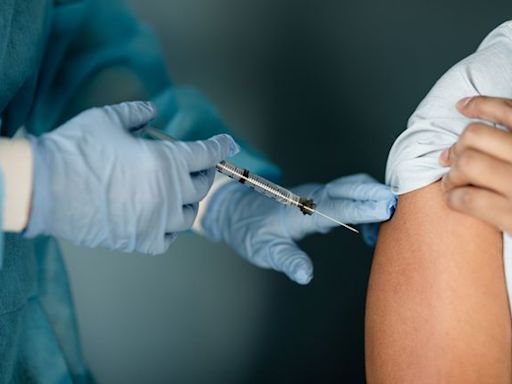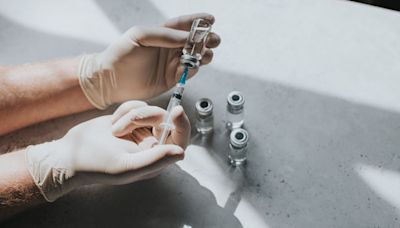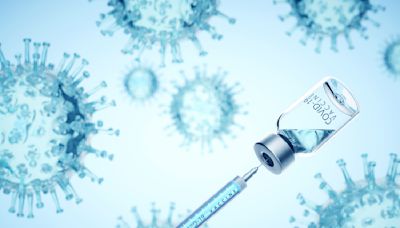Search results
Aug 30, 2024 · People who are moderately or severely immunocompromised may get additional doses of updated COVID-19 vaccine 2 or more months after getting the last updated COVID-19 vaccine. Talk to your healthcare provider about additional updated doses.
- Overview
- Discussion
- References
On March 15, 2021, this report was posted online as an MMWR Early Release.
Altmetric:
Citations:
Views:
Views equals page views plus PDF downloads
Figure
Two doses of the Pfizer-BioNTech and Moderna COVID-19 vaccines are required for optimal vaccine effectiveness (1). During the first 2 months of the U.S. COVID-19 vaccination program, among persons who received a first dose and had sufficient time to receive the second dose, 88.0% had completed the series and 3.4% had missed the second dose. Among all persons who received a second dose, the majority (95.6%) had done so within the recommended interval. These data are reassuring; however, the groups prioritized to receive vaccine during this period were more likely to have been vaccinated at their work site or residence, including health care workers (2) and long-term care facility residents*** (3), which might have facilitated adherence to the recommended schedule. As priority groups broaden, adherence to the recommended dosing interval might decrease. Although the second dose should be administered as close to the recommended interval as possible, it may be administered up to 42 days after the first dose when a delay is unavoidable.††† If the second dose is administered beyond the allowable interval, the series does not need to be restarted.§§§ Providers should not administer second doses before the recommended interval or hold or save doses for patients who have not returned >42 days after their first dose. Providers should regularly assess missed second doses and repurpose those doses as first doses for eligible persons to initiate the vaccination series.
This interim analysis identified differences in completion status among jurisdictions and some demographic groups, findings that can be used to inform and enhance technical assistance for COVID-19 vaccination. Series completion was lowest among older adults, a finding that is similar to results from an initial nationwide examination of coverage (4). However, this group was also the least likely to miss the second dose; a large percentage remained within the allowable interval for the second dose. Among racial and ethnic groups, series completion was lowest among AI/AN persons, who also had the highest prevalence of missed second doses. To improve accessibility to and acceptance of second doses and maximize timely series completion, public health officials should work to better understand whether missed doses or delays are caused by challenges to vaccine access (e.g., supply, clinic availability, or community disadvantages) or because of other challenges related to vaccine confidence or acceptance.
The findings in this report are subject to at least four limitations. First, second-dose status was unknown for 7.9% of first-dose recipients (i.e., persons with an unknown manufacturer for the first dose and persons who lived in one state with limited data reporting). Second, persons might have been counted twice if they received doses from two different reporting entities or if their first and second doses were not linked because they were assigned a different recipient ID at their second-dose administration, possibly resulting in an underestimate of series completion. This jurisdiction mismatch could have contributed to the series completion and missed dose rates for AI/AN persons because tribal nations can border multiple jurisdictions and also because they might have received their vaccine through a separate allocation to the Indian Health Service. Conversely, if the same recipient ID was assigned to two or more persons in the same reporting entity, doses administered to two separate persons might have been coded as a first and second dose, possibly resulting in an overestimate of series completion. Third, several winter weather events led to canceled vaccination clinics and distribution challenges, which might have played a role in certain differences among jurisdictions. Finally, race/ethnicity data were missing for 45.9% of persons who had sufficient time to receive the second dose, limiting the ability to interpret differences in vaccination completion and timing of receipt of the second dose by race/ethnicity.
Nearly 9 in 10 persons with sufficient time to receive their second COVID-19 vaccine dose completed the series and did so within the recommended interval. Missed doses and second doses administered outside the recommended interval were infrequent but varied by jurisdiction and demographic groups. Public health officials and providers should work to better understand the reasons for lack of completion of the COVID-19 vaccination series and early and delayed intervals. To ensure completeness and equity in series completion, CDC provides technical assistance¶¶¶ to improve strategies for completion within the recommended time intervals. Jurisdictions can work with providers to prioritize second doses to ensure vaccination series completion, reschedule persons whose vaccination appointments were canceled, repurpose missed second doses, and promote the importance of receiving a second dose for achieving maximum vaccine effectiveness. Providers can focus on support strategies such as scheduling follow-up visits during initial scheduling or first-dose administration and sending reminder notices before and after the recommended second-dose interval. Continued monitoring of series completion status across jurisdictions and by demographic characteristics is important to ensure equity in vaccine administration and vaccination coverage, especially as vaccination efforts expand to additional population groups.
1.Livingston EH. Necessity of 2 doses of the Pfizer and Moderna COVID-19 vaccines. JAMA 2021;325:898. https://doi.org/10.1001/jama.2021.1375external icon PMID:33533893external icon
2.O’Halloran AC, Lu PJ, Williams WW, et al. Influenza vaccination among workers—21 U.S. states, 2013. Am J Infect Control 2017;45:410–6. https://doi.org/10.1016/j.ajic.2017.01.005external icon PMID:28364911external icon
3.Dooling K, McClung N, Chamberland M, et al. The Advisory Committee on Immunization Practices’ interim recommendation for allocating initial supplies of COVID-19 vaccine—United States, 2020. MMWR Morb Mortal Wkly Rep 2020;69:1857–9. https://doi.org/10.15585/mmwr.mm6949e1external icon PMID:33301429external icon
4.Painter EM, Ussery EN, Patel A, et al. Demographic characteristics of persons vaccinated during the first month of the COVID-19 vaccination program—United States, December 14, 2020–January 14, 2021. MMWR Morb Mortal Wkly Rep 2021;70:174–7. https://doi.org/10.15585/mmwr.mm7005e1external icon PMID:33539333external icon
FIGURE. Inclusion criteria for analysis of COVID-19 vaccine series completion and second-dose interval* — United States,† December 14, 2020–February 14, 2021
* The recommended interval between the first and second dose is 21 days for Pfizer-BioNTech and 28 days for Moderna; in this study, second doses received 17–25 days (Pfizer-BioNTech) and 24–32 days (Moderna) after the first dose were included.
- Jennifer L. Kriss, Laura E. Reynolds, Alice Wang, Shannon Stokley, Matthew M. Cole, La Treace Q. Har...
- 2021
Apr 10, 2021 · According to the Centers for Disease Control and Prevention, second shots should be administered as close to the recommended interval as possible, but can be given up to 42 days after the...
Sep 6, 2024 · * An 8-week interval between the first and second COVID-19 vaccine (Moderna, Novavax, and Pfizer-BioNTech) doses might be optimal for some people as it might reduce the rare risk of myocarditis and pericarditis associated with these vaccines.
Jan 19, 2021 · ANSWER: No, you do not need to get the second shot exactly 21 or 28 days after the first. The Centers for Disease Control and Prevention says you can get the second dose later than the recommended interval, but you shouldn’t get it sooner.
- Marisa Charpentier
Feb 17, 2021 · The second dose of the Pfizer shot is supposed to be given 21 days after the first; for Moderna, the recommended interval between doses is 28 days. However, if you can't get an appointment on the exact day — or if you have to miss your scheduled appointment for some reason — the CDC does allow some wiggle room.
Feb 11, 2021 · The second shot of the COVID vaccine does not need to happen precisely 21 or 28 days after the first to be effective.



